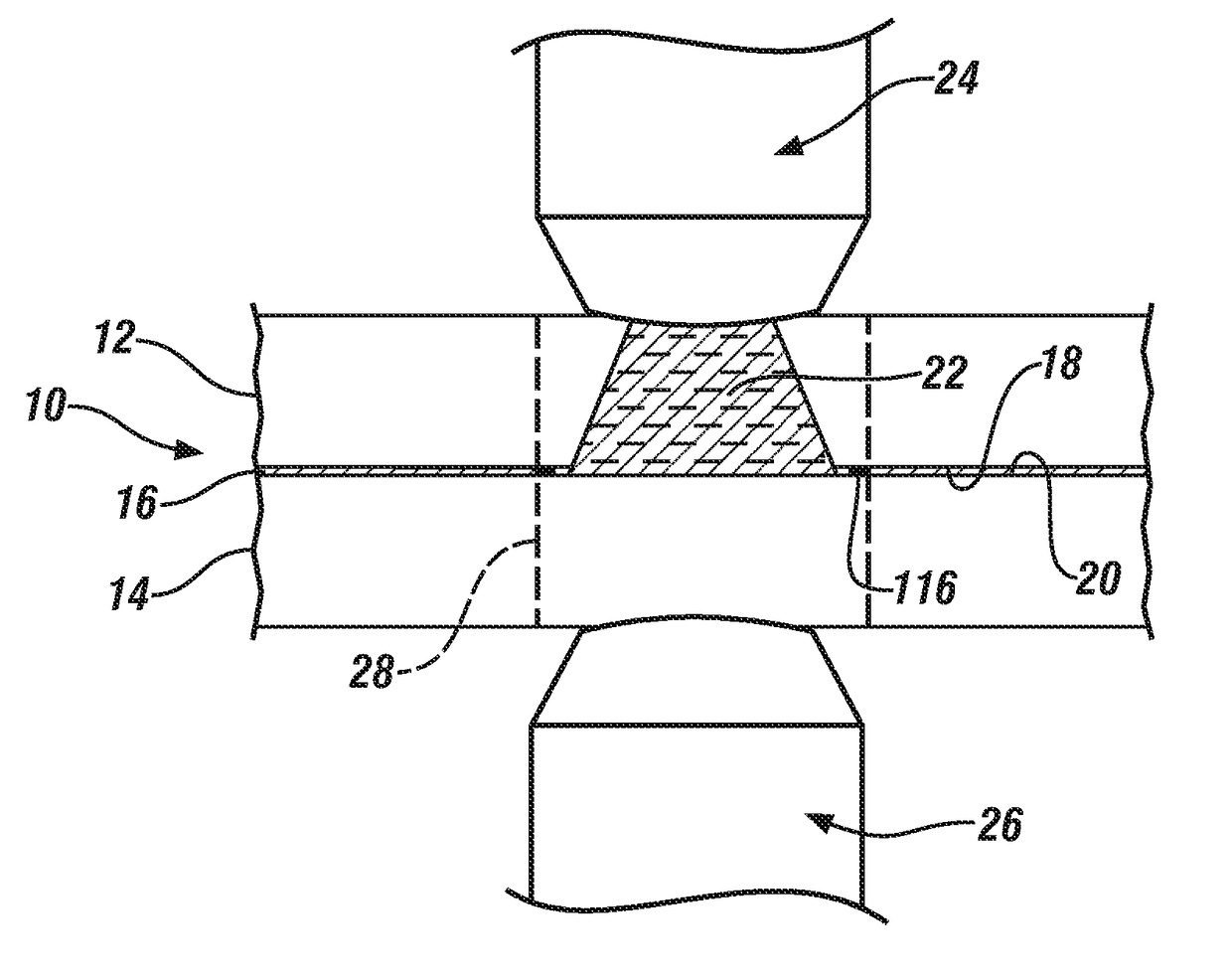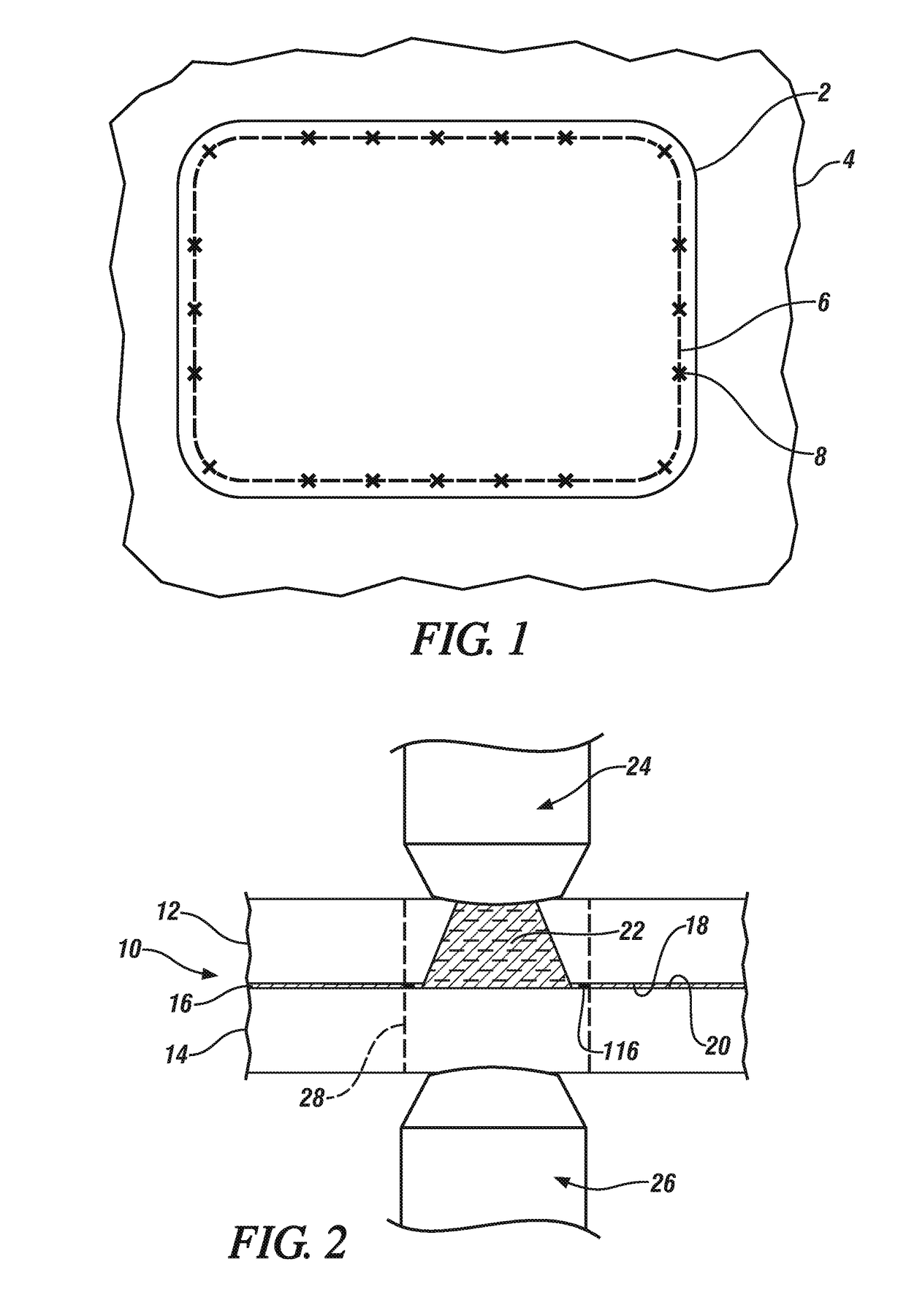Joining of light metal alloy workpieces to steel workpieces using resistance spot welding and adhesive
- Summary
- Abstract
- Description
- Claims
- Application Information
AI Technical Summary
Benefits of technology
Problems solved by technology
Method used
Image
Examples
Embodiment Construction
[0016]The present disclosure involves a method for joining a steel workpieces to a light metal workpiece such as, for example, an aluminum alloy workpiece or a magnesium alloy workpiece. The disclosed procedure uses adhesive weld bonding which, as previously described, is a combination of resistance spot welding and adhesive bonding, to securely join the workpieces together at a joining region such as overlapping flanges. Resistance spot welding is practiced at one or more designated spot weld locations and adhesive bonding is relied on to adhere portions of the workpieces together between the spot weld locations. The term “spot weld location” as used herein refers to the portions of the light metal workpiece and the steel workpieces that are engaged under pressure by welding electrodes and which are ultimately bonded together by a spot weld, which comprises a weld joint contained within the light metal workpieces, derived from passing electrical current between the electrodes. The ...
PUM
| Property | Measurement | Unit |
|---|---|---|
| Width | aaaaa | aaaaa |
| Width | aaaaa | aaaaa |
| Width | aaaaa | aaaaa |
Abstract
Description
Claims
Application Information
 Login to View More
Login to View More - R&D
- Intellectual Property
- Life Sciences
- Materials
- Tech Scout
- Unparalleled Data Quality
- Higher Quality Content
- 60% Fewer Hallucinations
Browse by: Latest US Patents, China's latest patents, Technical Efficacy Thesaurus, Application Domain, Technology Topic, Popular Technical Reports.
© 2025 PatSnap. All rights reserved.Legal|Privacy policy|Modern Slavery Act Transparency Statement|Sitemap|About US| Contact US: help@patsnap.com



